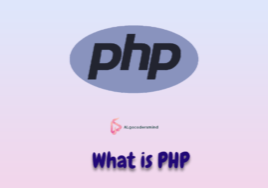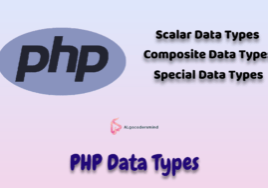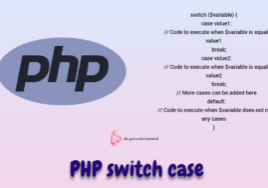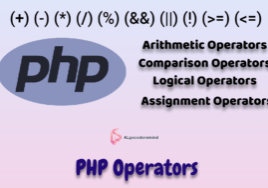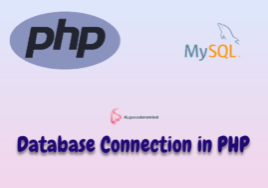Inheritance in PHP: A comprehensive guide
In the ever-evolving landscape of web development, PHP remains a steadfast choice for building dynamic and interactive websites. While PHP offers a plethora of functionalities and features, one concept that stands out and plays a pivotal role in modern web development is “Inheritance.” In this comprehensive guide, we will delve deep into the world of Inheritance in PHP, exploring its significance, implementation, and practical applications. By the end of this article, you will have a solid understanding of how to utilize Inheritance to craft efficient, organized, and maintainable PHP code.
Table of Contents
Understanding the Essence of Inheritance
What is Inheritance?
Inheritance, in the context of object-oriented programming (OOP), is a fundamental concept that enables the creation of new classes by inheriting properties and methods from existing ones. It’s akin to the way genetic traits are passed down from one generation to the next, allowing for the reusability of code and the establishment of hierarchical relationships between classes.
The Building Blocks: Classes and Objects
Before we delve deeper into Inheritance, let’s establish a foundational understanding of classes and objects in PHP.
Classes are blueprint templates for creating objects. They define the structure and behavior that an object will exhibit. Think of a class as a recipe for baking a specific type of cake. It outlines the ingredients (properties) and the steps to follow (methods) to bake that cake.
Objects, on the other hand, are instances of classes. Using our cake analogy, an object would be an actual cake baked following the recipe defined by a class.
Inheritance in Action
Extending a Class
In PHP, inheritance is achieved using the extends keyword. It allows you to create a new class (child class) that inherits the properties and methods of an existing class (parent class). Let’s illustrate this with an example.
class Animal {
public $species;
public function __construct($species) {
$this->species = $species;
}
public function makeSound() {
// Code to make a generic animal sound
}
}
class Dog extends Animal {
public function makeSound() {
// Code to make a dog-specific sound
}
}In this example, the Dog class extends the Animal class, inheriting the $species property and the makeSound method. However, the Dog class can override the makeSound method to provide its own implementation.
Why Use Inheritance?
Inheritance serves several crucial purposes in PHP development:
- Code Reusability: Inheritance allows you to reuse code from existing classes, reducing redundancy and promoting a more efficient coding process.
- Hierarchy: It establishes a hierarchy of classes, where child classes can specialize or extend the functionality of parent classes. This promotes a logical and organized code structure.
- Maintenance: When you need to make changes or updates to shared properties or methods, you can do so in the parent class, and those changes will propagate to all child classes.
Practical Applications of Inheritance
Building a Web Application with User Roles
Consider a scenario where you are developing a web application that has different user roles: “Admin,” “Editor,” and “Subscriber.” While these roles share some common attributes, each role also has distinct functionalities.
By employing inheritance, you can create a base User class with shared properties and methods, such as username and password handling. Then, you can extend this class to create specialized classes for each user role.
class User {
protected $username;
protected $password;
public function __construct($username, $password) {
$this->username = $username;
$this->password = $password;
}
}
class Admin extends User {
public function grantAdminPrivileges() {
// Code to grant admin privileges
}
}
class Editor extends User {
public function editContent() {
// Code to edit content
}
}
class Subscriber extends User {
public function subscribeToNewsletter() {
// Code to subscribe to the newsletter
}
}This approach ensures a clean and organized codebase, making it easier to manage and extend the application in the future.
Conclusion
Inheritance in PHP is a powerful tool that enables developers to create efficient, organized, and maintainable code. By understanding the principles of inheritance and applying them in your projects, you can harness the full potential of object-oriented programming. Whether you are building complex web applications or simple scripts, the concept of inheritance will undoubtedly elevate your PHP development skills.
Our Recommendation
- Session and Cookies in PHP: A comprehensive guide
- PHP Data Types – A Comprehensive Guide with Code Examples
- PHP Switch Case: Structure for Efficient Code Execution
- PHP Operators with Code Example: A Comprehensive Guide
- PHP Variable Scope: Mastering the Fundamentals for Efficient Code
- Implode and Explode in PHP tutorial
- PHP String Functions: Enhancing String Manipulation tutorial
- Exploring Array in PHP: A Comprehensive Guide
- Oops Concepts in PHP: A Guide with Code Examples
- Ternary Operator in PHP: Examples and Best Practices
- Pagination in PHP and MySql: Simplify Your Data Display and Navigation
- Secure and Simple: Forgot Password in PHP
- Login in PHP Secure & Reliable
- CRUD Operation in PHP: A comprehensive guide
- Inheritance in PHP: A comprehensive guide
Akhand Pratap Singh
Related Post
Newsletter
Recent Posts
- How to Upload Image into Database Using PHP
- Inheritance in PHP: A comprehensive guide
- Image Resize in Laravel 10 : A comprehensive Guide
- Laravel Passport: A comprehensive guide in Laravel 10
- Laravel JWT Tutorial: A comprehensive guide
- Import and Export Excel in Laravel: A Step-by-Step Guide
- Rest API in PHP: Building Powerful and Scalable Web Services
- Array to String in PHP – A Comprehensive Guide
- Event Loop in JavaScript: A comprehensive guide
- Ternary Operator in JavaScript: A Comprehensive Guide




